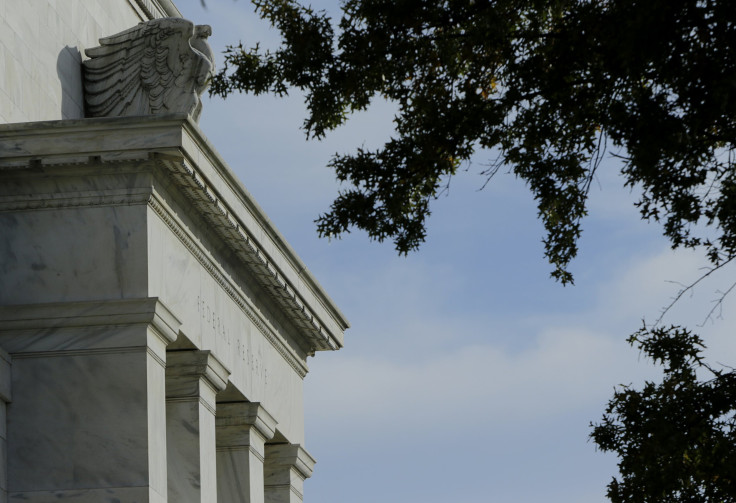Federal Reserve: Every Bank Passed The Stress Test; Should The Fed Make The Exams Harder?

On Thursday afternoon, 31 of the largest U.S.-based banks got a clean bill of health from the Federal Reserve. In the first round of its annual stress tests, the Fed found that every bank holding more than $50 billion on its books would stay solvent enough in a deep economic downturn to continue operating.
The full results of the stress tests, including a subjective judgment of banks’ internal risk controls, won’t be publicized until March 11. But the 100 percent passing rate on the first phase, unprecedented since the tests began in 2009, raises questions about whether the stress tests could really foretell, let alone forestall, the next financial crisis.
Those concerns were underscored this week in a paper from Columbia University and a Treasury Department unit that suggested the Fed’s results have grown too predictable. “The pattern suggests a missed opportunity to diversify the types of stresses tested,” the authors warned.
Others share their worries. “There are obviously a lot of issues about how you choose the scenarios that you’re going to use,” said Robert Engle, a Nobel Prize-winning economist at New York University. Engle and his NYU team pioneered a novel way of measuring the riskiness of individual banks that he describes as complementary to the Fed’s process.
“The use of one or two scenarios is a drawback,” Engle said. “Other industries, like insurance, use thousands of scenarios.”
This year, the Fed chose a familiar scenario: a housing crisis. The agency provided banks with “adverse” and “severely adverse” economic forecasts to measure their resilience against. The simulations asked banks to consider 28 disparate variables and asset prices ranging from collateralized debt obligations to lean hogs. With housing prices down a hypothetical 40 percent and unemployment in the double digits, the scenario presented a monumental task for banks and the Fed alike.
The growing complexity of the exams is undercut, however, by the increasingly routine nature of their outcomes. “Whereas the results of stress tests may be predictable,” the Treasury paper authors wrote, “the results of actual shocks to the financial system are not.”
There’s no question that the stress tests, together with the regulatory framework that shapes them, have pushed banks to moderate their risk-taking. The largest firms have added roughly $500 billion to their cash reserves since 2009. The industry’s capital ratios – the proportion of safe assets to volatile liabilities on the books – have risen well above precarious pre-crisis levels.
But behind those visible changes lies a process that remains in the shadows. “The biggest flaw in the system is the secrecy that surrounds the stress tests,” said Dennis Kelleher, president of the group Better Markets, which advocates for financial reform. “The Fed does release some information about the stress tests, but nowhere near enough for anyone to independently evaluate the model.”
Though the Fed publicizes its scenarios and final judgments, its rationale remains highly guarded. Banks, too, are discouraged from openly discussing the process. This secrecy stems in part from banks’ desire to keep proprietary information private, in part from the Fed’s desire to keep banks from reverse-engineering the process.
But the confidentiality of the Fed’s testing process leaves the public uninformed, Kelleher said. “The fact there are stress tests at all is a dramatically important improvement in regulation,” Kelleher said. “But the Fed itself would benefit from transparency.” He suggested that the Fed disclose the inner workings of each stress test a year after the fact, to be pored over by researchers and watchdogs.
One of the biggest open questions is how the Fed balances its scrutiny of individual banks with a broader systemic focus. The 2007-09 financial collapse, after all, resulted not just from the failure of one bank, but from industrywide convulsions. “It’s exactly the fact that these banks all collapse at the same time that led to the collapse in the economy,” Engle said. The stress tests grade banks individually, leading some to worry whether the Fed might be overlooking broader issues.
The alternative test Engle and his colleagues have designed provides an example of what a more systemic approach might look like. Dubbed the V-Lab, the process uses publicly available metrics to gauge how individual banks, and their underlying equities, might react to overall shifts in the market.
“We ask, ‘How much is the equity going to fall in the case of a financial crisis?’” Engle said. Since banks hold vast stores of diverse assets, broader market movements correlate with the rise and fall of individual banks. “The amount they go down is a way of measuring how sensitive they are to overall collapse.”
Since the V-Lab relies on public information, and not reams of sensitive internal bank documentation, it updates in real time. And despite diverging at times from the Fed’s analyses, it has generally tacked closely to the stress test results. “It’s reassuring when those numbers turn out to be pretty similar to what the stress test numbers are,” Engle said.
But while the Fed’s tests involve herculean efforts on the part of bank compliance teams and around 600 federal examiners, the V-Lab hums along continuously inside a server somewhere at NYU. “These tests could be done a lot more frequently, a lot more costlessly and a lot less invasively,” Engle said. That’s one point where regulators and banks might find common ground.
© Copyright IBTimes 2024. All rights reserved.






















